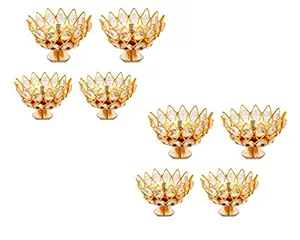અંબા અભય પદ દાયની રે
અંબા અભય પદ દાયિની રે,
શ્યામા સાંભળજો સાદ ભીડ ભંજની, અંબા અભય…
હેમ હિંડોળે હિંચકે રે,
હીંચે આરાશુરી માત ભીડ ભંજની, અંબા અભય…
સંખીઓ સંગાથે કરે ગોઠડી,
આવે આઠમ ની રાત ભીડ ભંજની, અંબા અભય…
સર્વે આરાશુર ચોક માં રે,
આવો તો રમીએ રાસ ભીડ ભંજની, અંબા અભય…
એવે સમે આકાશ થી રે,
આવ્યો કરુણ પોકાર ભીડ ભંજની, અંબા અભય…
કોણે બોલાવી મુજને રે,
કોણે કર્યો મને સાદ ભીડ ભંજની, અંબા અભય…
મધ દરિયો તોફાન માં,
માડી ડૂબે મારું વહાણ ભીડ ભંજની, અંબા અભય…
વાયુ ભયંકર ફૂંકતો રે,
વેરી થયો વરસાદ ભીડ ભંજની, અંબા અભય…
પાણી ભરાણા વહાણ માં રે,
એ કેમ કાઢ્યા જાય ભીડ ભંજની, અંબા અભય…
આશા ભર્યો હું આવીયો રે,
વહાલા જોતા હશે વાટ ભીડ ભંજની, અંબા અભય…
હૈયું રહે નહિ હાથ માં રે,
દરિયે વાળ્યો દાટ ભીડ ભંજની, અંબા અભય…
મારે તમારો આશરો રે,
ધાઓ ધાઓ મમ માત ભીડ ભંજની, અંબા અભય…
અંબા હિંડોળે થી ઉઠયા રે,
ઉઠયા આરાશુરી માત ભીડ ભંજની, અંબા અભય…
સખીઓ તે લાગી પુછવા રે,
ક્યાં કીધા પરિયાણ ભીડ ભંજની, અંબા અભય…
વાત વધુ પછી પુછજો રે,
બાળ મારો ગભરાય ભીડ ભંજની, અંબા અભય…
ભક્ત મારો ભીડે પડ્યો રે,
હું થી એ કેમ સેહવાય ભીડ ભંજની, અંબા અભય…
એમ કહી નારાયાણી રે,
સિંહે થયા અસ્વાર ભીડ ભંજની, અંબા અભય…
ત્રિશુલ લીધું હાથ માં રે,
તાર્યું વણીકનું વહાણ ભીડ ભંજની, અંબા અભય…
ધન્ય જનેતા આપને રે,
ધન્ય દયાના નિધાન ભીડ ભંજની, અંબા અભય…
પ્રગટ પરચો આપનો રે,
દયા કલ્યાણ કોઈ ગાય ભીડ ભંજની, અંબા અભય…
બધી તેની ભાંગજો રે,
સમયે કરજો સહાય ભીડ ભંજની, અંબા અભય…
અંબા અભય પદ દાયિની રે …
Overview of “Amba Abhay Pad Dayani Re”
Meaning of the Title
“Amba Abhay Pad Dayani Re” literally means “O Mother Amba, the sheltering (abhay) feet (pad), merciful one (dayani), O Mother.” It invokes the protection of Goddess Amba by focusing on her compassionate nature.
Cultural Context
This Garba is popular during Navratri among Gujarati communities. It expresses devotional longing, celebration, and the bond with the Mother Goddess, especially in collective folk performances, dance circles and devotional singing. :contentReference[oaicite:0]{index=0}
When is it sung
Sung especially in the evenings of Navratri, during “Garba” dance gatherings. The mood is devotional, joyful, sometimes reflective — when devotees gather after dusk to sing, dance, offer worship. :contentReference[oaicite:1]{index=1}
Emotional Tone
The lyrics blend emotions of fear (of dangers like storms, floods), hope, faith, and surrender. The devotee seeks refuge in the Mother, asking for safety, help, and blessings. :contentReference[oaicite:2]{index=2}
Popularity & Versions
Multiple singers have performed it; versions exist in recorded audio (Spotify, etc.) and live performances in Garba events. Variations might exist in tune slightly, but core lyrics remain widely known. :contentReference[oaicite:3]{index=3}
Lyrics Analysis
Lyrics Themes – Nature Imagery
The song uses imagery of storms, winds, rain, drowning boat, etc., to highlight turmoil, danger, and how the devotee seeks Amba’s protection. :contentReference[oaicite:4]{index=4}
Repetition & Garba Rhythm
Repetition of the refrain “Amba Abhay …” and repeating lines provides a rhythmic cycle that fits Garba dance, helping dancers synchronize steps and build communal involvement. :contentReference[oaicite:5]{index=5}
Addressing the Divine
The devotee directly addresses Goddess Amba, using titles like “Dayani,” “Mother,” “Jagadbamba,” etc. This direct invocation increases the devotional intensity. :contentReference[oaicite:6]{index=6}
Mood Progression
The song begins with pleas, then moves through fear, natural challenges, hope, and finally affirming faith in the goddess’s protection. There is a movement from crisis toward solace. :contentReference[oaicite:7]{index=7}
Use of Local Vocabulary and Imagery
Words like 'Maaji', 'Bid Bhanjani', 'Garba', references to local nature, etc., give it strong local flavor. This helps connect with Gujarati-speaking devotees. :contentReference[oaicite:8]{index=8}
Musical & Performance Aspects
Typical Instruments
Garba renditions often include dhol, tabla, manjira, and sometimes harmonium. The rhythm is designed for dancing in circle formations. (While not specified in lyrics page, the Garba tradition supports these instruments.)
Melodic Style
The melody tends to be devotional folk with moderate tempo (not too slow, not too fast) to balance dance and devotional singing. It often uses minor and major transitions to reflect mood changes in lyrics.
Audience Participation
Garba is community dance-song. Audiences join in refrains, clap, dance, repeat refrain. The song is structured to allow voices of many to join. :contentReference[oaicite:9]{index=9}
Dance Connection
Garba dance movements often follow the lyric cues — swirling, moving in circles, hitting rhythms during refrains, invoking gestures of protection or surrender during emotional portions of lyrics.
Live vs Recorded
Live versions during Garba nights have variations in tempo, instrument emphasis. Recorded versions may have studio polish, backing vocals, etc. :contentReference[oaicite:10]{index=10}
Festival & Cultural Importance
Role in Navratri
“Amba Abhay Pad Dayani Re” is sung during Navratri, especially during nights dedicated to Goddess Amba, as part of Garba rituals. It helps set devotional mood, bring community together. :contentReference[oaicite:11]{index=11}
Regional Spread
While rooted in Gujarat, this Garba song is known among Gujarati diaspora globally. It is picked up by Garba organizers and cultural groups beyond Gujarat.
Social Bonding
Garba nights with this song help bring together people of different ages and backgrounds. The devotional aspect plus dance helps strengthen community ties.
Symbolism of Mother Goddess
The song symbolizes Amba as protector, mother, refuge in adversity. During festivals, invoking her through such songs reinforces faith and feminine divine symbolism.
Emotional Catharsis
Devotees often experience emotional release — fear, devotion, joy — through singing, dancing to this song. It plays a role in managing collective emotion during festival nights.
How to Sing & Use Guidance
Lyrics Meaning Guide
Knowing translations or meaning of key lines helps devotees better connect with song (for example, understanding metaphor of storm, boat, etc.). Adding translation sections boosts SEO for non-Gujarati readers.
Pronunciation Tips
Because some words are local and dialect-specific, including tips on how to pronounce (e.g. “Bid Bhanjani”, “Aarasuri”) helps accurate singing and better engagement.
Translations
Provide English (or Hindi) translation of key stanzas helps reach wider audience; non-Gujarati devotees can follow meaning. Useful for SEO by covering bilingual keyword searches.
Chord/Notation Information
If possible, include chords or notes for guitar/harmonium so Garba singers/musicians can use it; useful content for users and helps dwell-time.
Usage in Garba Events
Suggestions for when to use this song (for example, in early Garba, mid-night, closing) helps event organizers or participants plan. Helps content be more actionable.
“Amba Abhay Pad Dayani Re” literally means “O Mother Amba, the sheltering (abhay) feet (pad), merciful one (dayani), O Mother.” It invokes the protection of Goddess Amba by focusing on her compassionate nature.
This Garba is popular during Navratri among Gujarati communities. It expresses devotional longing, celebration, and the bond with the Mother Goddess, especially in collective folk performances, dance circles and devotional singing. :contentReference[oaicite:0]{index=0}
Sung especially in the evenings of Navratri, during “Garba” dance gatherings. The mood is devotional, joyful, sometimes reflective — when devotees gather after dusk to sing, dance, offer worship. :contentReference[oaicite:1]{index=1}
The lyrics blend emotions of fear (of dangers like storms, floods), hope, faith, and surrender. The devotee seeks refuge in the Mother, asking for safety, help, and blessings. :contentReference[oaicite:2]{index=2}
Multiple singers have performed it; versions exist in recorded audio (Spotify, etc.) and live performances in Garba events. Variations might exist in tune slightly, but core lyrics remain widely known. :contentReference[oaicite:3]{index=3}
The song uses imagery of storms, winds, rain, drowning boat, etc., to highlight turmoil, danger, and how the devotee seeks Amba’s protection. :contentReference[oaicite:4]{index=4}
Repetition of the refrain “Amba Abhay …” and repeating lines provides a rhythmic cycle that fits Garba dance, helping dancers synchronize steps and build communal involvement. :contentReference[oaicite:5]{index=5}
The devotee directly addresses Goddess Amba, using titles like “Dayani,” “Mother,” “Jagadbamba,” etc. This direct invocation increases the devotional intensity. :contentReference[oaicite:6]{index=6}
The song begins with pleas, then moves through fear, natural challenges, hope, and finally affirming faith in the goddess’s protection. There is a movement from crisis toward solace. :contentReference[oaicite:7]{index=7}
Words like 'Maaji', 'Bid Bhanjani', 'Garba', references to local nature, etc., give it strong local flavor. This helps connect with Gujarati-speaking devotees. :contentReference[oaicite:8]{index=8}
Garba renditions often include dhol, tabla, manjira, and sometimes harmonium. The rhythm is designed for dancing in circle formations. (While not specified in lyrics page, the Garba tradition supports these instruments.)
The melody tends to be devotional folk with moderate tempo (not too slow, not too fast) to balance dance and devotional singing. It often uses minor and major transitions to reflect mood changes in lyrics.
Garba is community dance-song. Audiences join in refrains, clap, dance, repeat refrain. The song is structured to allow voices of many to join. :contentReference[oaicite:9]{index=9}
Garba dance movements often follow the lyric cues — swirling, moving in circles, hitting rhythms during refrains, invoking gestures of protection or surrender during emotional portions of lyrics.
Live versions during Garba nights have variations in tempo, instrument emphasis. Recorded versions may have studio polish, backing vocals, etc. :contentReference[oaicite:10]{index=10}
“Amba Abhay Pad Dayani Re” is sung during Navratri, especially during nights dedicated to Goddess Amba, as part of Garba rituals. It helps set devotional mood, bring community together. :contentReference[oaicite:11]{index=11}
While rooted in Gujarat, this Garba song is known among Gujarati diaspora globally. It is picked up by Garba organizers and cultural groups beyond Gujarat.
Garba nights with this song help bring together people of different ages and backgrounds. The devotional aspect plus dance helps strengthen community ties.
The song symbolizes Amba as protector, mother, refuge in adversity. During festivals, invoking her through such songs reinforces faith and feminine divine symbolism.
Devotees often experience emotional release — fear, devotion, joy — through singing, dancing to this song. It plays a role in managing collective emotion during festival nights.
Knowing translations or meaning of key lines helps devotees better connect with song (for example, understanding metaphor of storm, boat, etc.). Adding translation sections boosts SEO for non-Gujarati readers.
Because some words are local and dialect-specific, including tips on how to pronounce (e.g. “Bid Bhanjani”, “Aarasuri”) helps accurate singing and better engagement.
Provide English (or Hindi) translation of key stanzas helps reach wider audience; non-Gujarati devotees can follow meaning. Useful for SEO by covering bilingual keyword searches.
If possible, include chords or notes for guitar/harmonium so Garba singers/musicians can use it; useful content for users and helps dwell-time.
Suggestions for when to use this song (for example, in early Garba, mid-night, closing) helps event organizers or participants plan. Helps content be more actionable.


